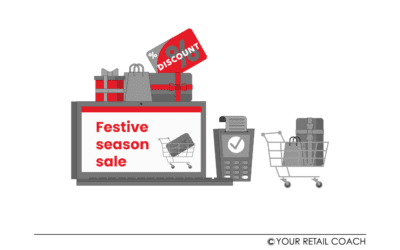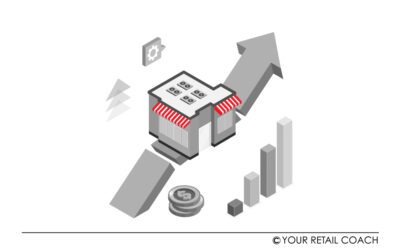Developing an Online Marketplace
Developing an Online Marketplace
Online Marketplace Business Plan
Presently, e-commerce marketplaces are getting created faster than brick-and-mortar stores. This has much to do with the success of marketplaces such as Amazon, eBay, Etsy, and Flipkart. These success stories have propelled the aspirations of many potential entrepreneurs all over the globe.
One may be given to believe that creating marketplaces is daunting, however, a good strategy and an effective implementation plan along with defined SOPs (Standard Operating Procedures) can contribute to the creation of a successful e-commerce marketplace. This write-up seeks to interest readers on “how to build a multi-vendor marketplace?” or “how to build a marketplace platform?” It is meant for entrepreneurs who are earnestly looking at the possibility to build a marketplace platform.
What is a Marketplace?
Before we go any further, let’s understand – how to create an online marketplace or how to build a B2B marketplace. What a marketplace really is?. It is an inventory-light e-commerce platform that allows multiple vendors to sell their products, with the commission from each sale going to the marketplace.
The marketplace makes money from commissions on sale by merchants/sellers & third-party advertising done to enhance online visibility. Marketplace is responsible for attracting end consumers to the platform. The marketplace business model has multiple revenue channels and it is one of the main factors that is driving the interest of entrepreneurs in the online marketplace business model.
Major Types of Marketplace Platforms
B2C Online Marketplace Model:
This scale of operation of a B2C marketplace is larger compared to a simple online store. There are multiple stakeholders in the business model which includes merchants or suppliers, end consumer, courier service providers, last-mile delivery team and the back-end operations team of the marketplace. The operations model is very different compared to an online store. The Similarity to an online store, is that it caters to the retail end consumers, the major difference is an online marketplace is an inventory-light model. Amazon and Flipkart are good examples of a multi-vendor online marketplace.
B2B Online Marketplace Model:
This is an e-commerce marketplace business model wherein businesses sell products to various other businesses in bulk quantities.B2B online marketplaces create self-service, digitally-sourced environments where multiple vendors can offer products or services to business customers. As with online B2C sites, B2B marketplaces claim to make it easier to identify the right supplier, improving the customer experience by making transactions simpler and more transparent. Buyers gain choice, value, and greater efficiencies, while sellers, under pressure themselves to grow revenues, gain access to a broader pool of buyers—without the burden of marketing. Most sellers on these platforms tend to be manufacturers, wholesalers or distributors. Websites like Amazon Business (B2B) & Alibaba are good examples of B2B marketplace business models.
P2P Marketplace Model (Peer-to-Peer):
This is a decentralized platform without strict demarcation between buyer and seller. The platform allows two individuals to interact and transact directly with each other without the need for an intermediary. This kind of platform can leverage technology to overcome issues related to trust, and enforcement that is traditionally done with the utilization of third party services. The P2P platform provides services such as screening, rating, payment processing and escrow. A good example of such a model is OLX.
Challenges in Setting Up a Marketplace (Sellers Side)
Now that we understand an online marketplace, let’s delve into the challenges that come forth in setting up a marketplace. Most often these are the reasons, why an entrepreneur backs out from setting up a marketplace, these are:
Policies for Sellers:
An marketplace owner would be served well if he/ she has well-defined and detailed policies for the sellers even before making contact with them. Such policies can be incorporated into the SLA (Service Level Agreement) & SOPs (Standard Operating Procedures) laying down the expectations for the sellers to be aware of while operating on the platform.
For the policy to remain effective the sellers must be asked to concur with the policies by signing a binding agreement that remains in-effect till they remain active in the marketplace. Also, there should be emphasis from the owner on training sellers on the policies formulated for the marketplace
Listing Sellers:
It begins with responding to inquiries from sellers about listing on marketplace and other facets of the business and culminates in the training and onboarding of the sellers/ merchants.
Add-on Services for Sellers:
Getting the sellers on-board does involve a lot of convincing on the part of the marketplace. Most often sellers’ intention to join would be dependent on the value-added services provided. This can involve on-field support, last-mile delivery support, marketing support and so on.
Catalogue Management by Sellers:
Unless a marketplace is attracting a huge amount of traffic and repeat buyers, the sellers usually are quite lethargic about updating their catalogue and inventory. These practices are critical to a new marketplace as wrong inventory information can lead to the cancellation of orders leading to a reduced trust among end-users and the marketplace.
Backend Support:
Since sellers are an integral part of the platform, there needs to be a back-end support system to address their concerns/ queries, as we do for the end-users.
How Your Retail Coach (YRC) be able to address these Concerns?
YRC is able to help an online marketplace with well-defined SOPs that can increase the satisfaction among sellers, reduce the chaos in operations, improve the sellers’ confidence, and go on to enhance the brand image of the marketplace. All these are critical to the business in the first 1000 days and it comes from our experience in setting up several online marketplaces.
Challenges in Setting Up a Marketplace (End-users Side)
Order Management:
In the initial days of a marketplace, it becomes extremely important to establish trust among shoppers and this has to be done with efficient order management where individual deliveries happen in a timely and correct manner. The process can be streamlined with adequate coordination between the seller and the delivery partner. In such cases, SLA (Service Level Agreements) can play a critical role in monitoring error rates and reduce them substantially in the long-run.
Last-Mile Delivery:
An online marketplace has to understand quite early the importance of timely delivery and returns from customers. There can be no room for lapses in this area and it has to be well-managed by the stakeholder in charge.
Customer Care Management:
This area of business activity acts as the voice of the brand and it is extremely critical that seamless communication between the marketplace and customers gets established. The marketplace must remain sensitive to the concerns and grievances of the customer to uphold the reputation of the brand. In contrast, a callous attitude towards customer concerns can cause a grievous impact on the image of the brand in the long-run.
Customer Engagement:
The success of an online marketplace is more or less dependent on repeat buying. This makes customer engagement an important aspect that must be given due attention encouraging users to return to the market place and become loyal customers. Here, activities associated with database management and handling of CRM are likely to play an integral role in the pattern associated with repeat buying.
How Your Retail Coach (YRC) is able to Address these Challenges?
YRC can play an instrumental role in the success of an online marketplace with well-defined SOPs (Standard Operating Procedures) that can enhance the brand image by addressing and solving customer grievances with utmost precision and care. In addition, the backend team would be equipped with well-written and articulate process manuals by e-commerce experts which will reduce error rates and increase the happiness quotient among customers.
Why are YRC Experts the most Preferred for Setting up an Online Marketplace?
We have in-house experts who have extensively worked in the field of e-commerce and come with hands-on experience in setting up online businesses in various niches. Moreover, our team of professionals has played integral roles in enhancing the brand value, image, and improving overall satisfaction level among online customers. Our most sought-after services in the e-commerce domain include:
- Online Marketplace Business Plan
- Market Research for Business Model Validation
- Online Marketplace Best Practices/ SOPs/ Process Manuals
- Customer Experience Enhancement (CX)
Get Advice for Developing an Online Marketplace
Related Blogs
Making the most out of the festive season shopping: A Customer Perspective for Retailers
Decoding the Festive Shopping Spree For us, as customers, the festive season is a licence to spend. The vibes of festivity ushers with joy and a sense of celebration. This elevated mood often turns into an enhanced willingness to spend and indulge in shopping. It is a...
Mitigating Business Risks in Retail
Spotting the Swirls Sailing the stream of retail is canopying between opportunities on the surface and risks as the current of that stream. If the bad swirls are not spotted in advance, it can turn things undesirable. While big brands grapple with issues like lapses...
How Retailers are Enhancing Customer Experience (CX) with Hyper-Localisation
Hyper-localisation is an alignment strategy that helps retail brands and businesses mould into the requirements of a locality-based market environment. Marketing-wise, it helps retailers tailor their value propositions to cover the needs and expectations of highly...





We work only for Visionaries.